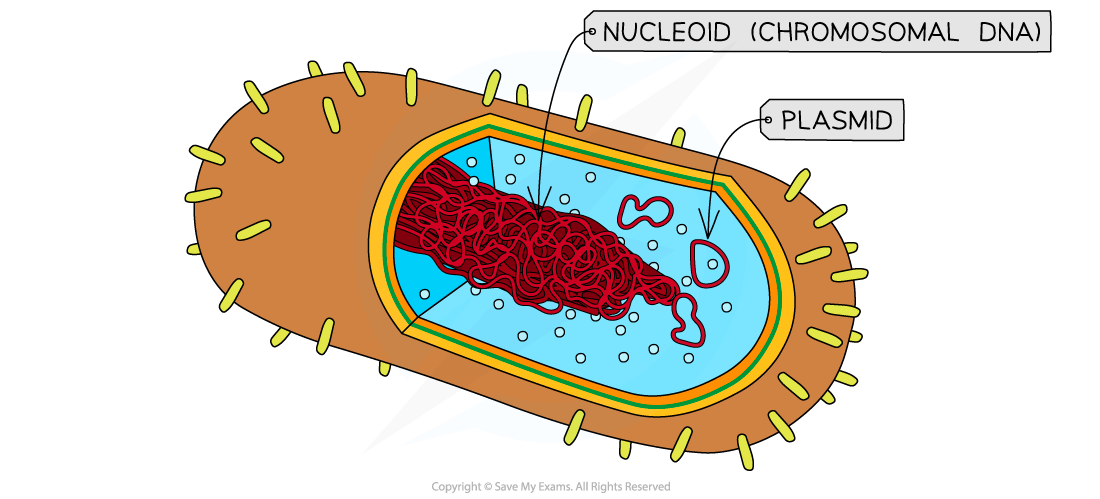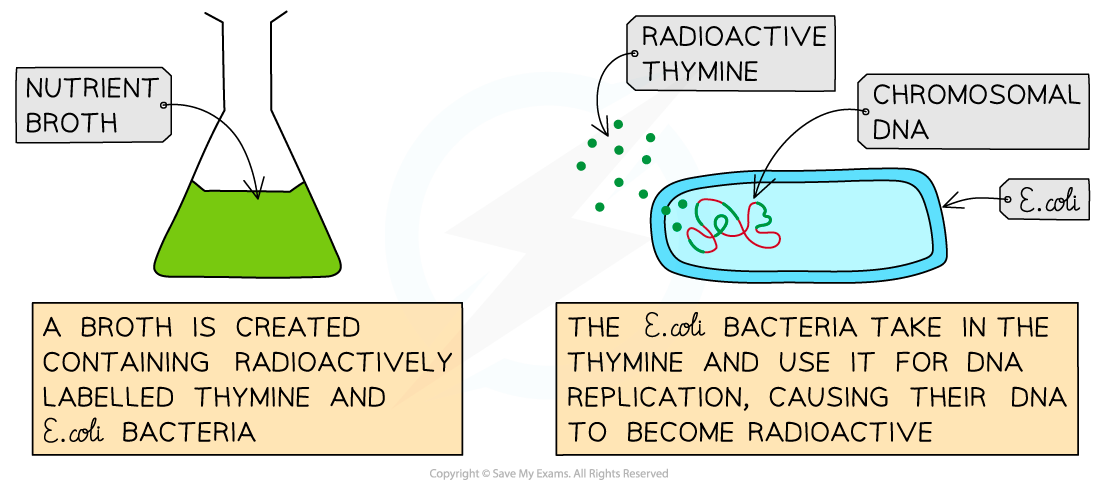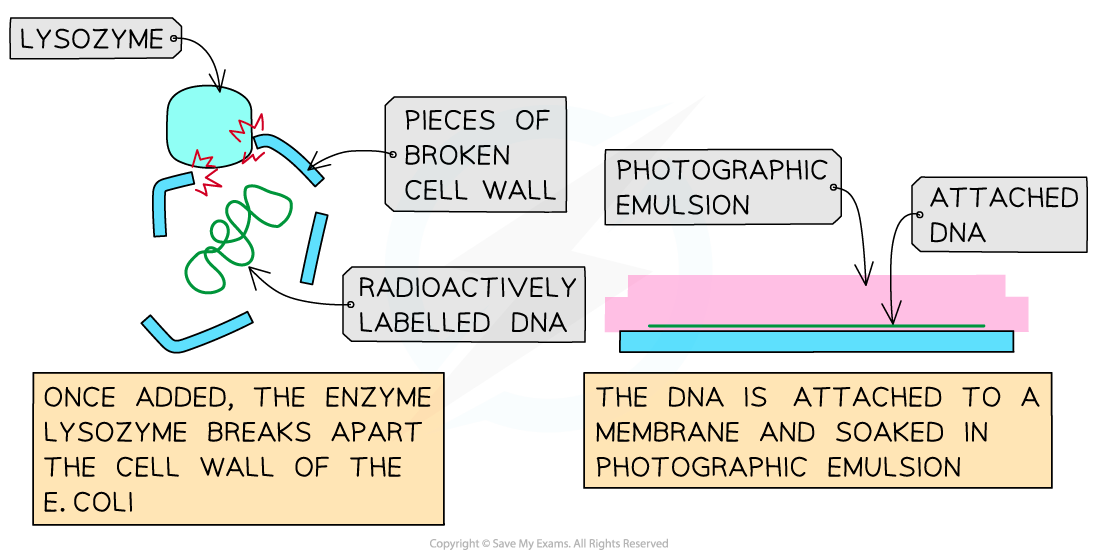Prokaryotic Chromosomes
- The DNA in prokaryotic cells is significantly different from the DNA found in eukaryotic cells
- Prokaryotes do not contain a nucleus therefore the DNA is located in the cytoplasm of the cell
- Prokaryotic DNA consists of a single, circular chromosome
- It is sometimes referred to as a nucleoid
- The DNA within prokaryotic cells is not associated with any proteins
- Prokaryotic DNA is sometimes referred to as naked
- Eukaryotic DNA associates with histone proteins
Plasmids
- Prokaryotes also usually have one or more plasmids
- Most eukaryotes do not contain plasmids
- Yeast are the only types of eukaryotes that contain plasmids similar to those in prokaryotes
- Plasmids are very small circular DNA molecules
- They usually only contain a few genes
- They are short, typically 100,000 base pairs in length
- They are more accessible for proteins required for gene expression and therefore contain genes that are required often, quickly and/or in emergencies
- Plasmids can sometimes be passed 'sideways' from one cell to another, outside of the normal inheritance pattern during cell division
- They can also be used as a vector during genetic engineering to transfer DNA between species

Image showing the arrangement of DNA within a prokaryotic cell
Autoradiography
NOS: Developments in scientific research follow improvements in techniques; autoradiography was used to establish the length of DNA molecules in chromosomes
- In scientific research, critical developments often follow improvements in scientific apparatus
- For example, distant objects in Space often remain undiscovered until a telescope (or some other piece of equipment) powerful enough to detect them is developed
- The fact that scientific research is often held back by a lack of sufficiently powerful or precise apparatus is a problem that will continue into the future
- In some ways, this is very exciting, as it suggests that our scientific knowledge and understanding of the universe will continue to expand as new scientific techniques and technologies are developed
- Autoradiography is a technique used to study DNA by labelling it using radioactive isotopes
- These isotopes were fed to E. coli bacteria which incorporated them into their DNA
- When exposed to a photographic film the radioactive isotopes caused the film to become developed, resulting in an image of the DNA being produced
- In order to do this scientists use a radioactive version of the DNA base thymine, due to the fact this isn't found in RNA
- The reason why the thymine is radioactive is because it contains tritium, a radioactive isotope of hydrogen
- If scientists want to study RNA (for example, during the process of transcription) they can use a radioactive version of uracil instead, as this is not found in DNA
- This technique can be used to study DNA in both eukaryotes and prokaryotes
- In the past, this technique has been used to make new discoveries about the length and shape of DNA in different organisms
Cairns' Experimental Technique
Cairns’ technique for measuring the length of DNA molecules by autoradiography
- John Cairns was a scientist working in the field of molecular genetics and cancer research in the 1960s
- During this time he pioneered a technique of using autoradiography to study the DNA of E. coli to determine its length and shape
- The method that Cairns used is as follows:
- He first kept the E. coli bacteria in a nutrient broth containing a tritiated thymidine which is a radioactive version of the DNA base thymine attached to a deoxyribose sugar
- The E. coli bacteria incorporated these bases into their DNA during replication. This meant that after several generations the DNA was fully radioactive
- He then lysed the cells using an enzyme called lysozyme, breaking apart the cell walls, which allowed the DNA to be accessed
- The DNA was fixed into position onto a membrane
- The membrane was submerged in a photographic emulsion containing silver ions (Ag+) for two months
- When the silver ions were exposed to the radioactive DNA, the ions were reduced to silver metal. The grains of silver metal caused visible black dots to appear in the photographic emulsion
- Once this emulsion had been developed it could be viewed under an electron microscope and the length and shape of DNA could be studied
- By using this technique Cairns made many important discoveries
- He found that E. coli contains a single, circular chromosome of DNA
- He also measured the length of the circular chromosome to be 1100µm long (550 times bigger than the E. coli cell itself)
- Cairns later went on to make important discoveries about the method of DNA replication in prokaryotes using this same technique



The Cairns' technique of using autoradiography to view DNA
